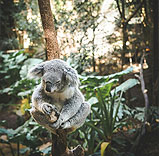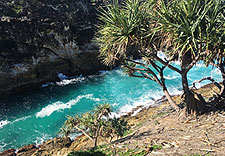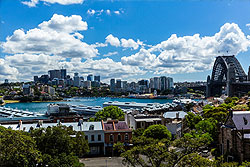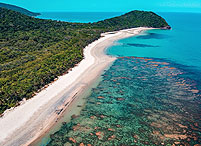NAATI Certified Translation for Coalcliff
Certified translation examples from Sydney Translation Services.
Driver License
Birth Certificate
Passport Translation
Marriage Certificate
Death Certificate
Divorce Certificate
Degree Certificate
No-Criminal Record
The Gupapuyngu Language

- Unique Phonology: Gupapuyngu, a Yolŋu Matha language of North-East Arnhem Land, features a rich phonological system with distinct sounds that are uncommon in many other languages. Translators must be attuned to the specific sounds and pronunciations to accurately convey meaning, especially when dealing with oral histories or culturally significant texts.
- Oral Tradition: Gupapuyngu is traditionally an oral language, with written forms developed more recently. As such, much of the translation work involves transcribing spoken language, which requires a deep understanding of cultural context and oral storytelling techniques.
- Contextual Sensitivity: Many words and phrases in Gupapuyngu are deeply tied to cultural practices and the local environment. Translators need to ensure that these cultural nuances are preserved in the translation, especially when dealing with ceremonial or traditional knowledge, where mistranslation could lead to significant misinterpretations.
- Translating Legal and Educational Documents: Gupapuyngu is increasingly used in legal and educational contexts, especially in the Northern Territory. Translators working on these types of documents need to ensure that the correct legal and academic terminology is employed, respecting both the traditional language structure and the specific requirements of official communication.
About Coalcliff
 Coalcliff is a town on the coast of New South Wales, Australia, between Sydney and Wollongong. Together with Stanwell Park it belongs to the Little Bulli indentation of the northern Illawarra coast strip. In 1796 William Clark and others trekking north to Port Jackson from the wrecked ship Sydney Cove noticed coal exposed at the cliffs there and made a fire from it, attracting rescuers, giving the area its name.
Coalcliff is a town on the coast of New South Wales, Australia, between Sydney and Wollongong. Together with Stanwell Park it belongs to the Little Bulli indentation of the northern Illawarra coast strip. In 1796 William Clark and others trekking north to Port Jackson from the wrecked ship Sydney Cove noticed coal exposed at the cliffs there and made a fire from it, attracting rescuers, giving the area its name.
George Bass was despatched to report on it and traced the deposit along the shore and inland. There was nowhere for ships to safely land though, so it was not until 1850 that it began to be excavated. In 1888 the Coalcliff General Store opened at 19 Paterson Road (once referred to as the 'main street') by Mr John Earle Gibbons and his wife, son and daughter-in-law of Matthew John Gibbons who arrived in Australia in 1790 as a convict on the Second Fleet, and was one of Coalcliff's earliest residents. Architecturally the store was of plain colonial style, constructed of local wood with a sandstone foundation. It sold, amongst other household items, Milk, Bread, Butter, Drinks, Meat, Stationary goods, Cigarettes and other tobacco paraphernalia, jams, preserves, poultry and bakery products. The shop was the major lifeforce behind the township until closure in 1907. The same year the shops was burned to the ground via unknown causes and remained a vacant lot until 1910 when another store was erected and opened by a Mr. L. Jameson. This is the building that still stands today at the corner on Paterson Road, which has been a private residential property since 1961.
Other Gupapuyngu Translation Service Locations
Birchgrove Gupapuyngu Translator, Broken Hill Gupapuyngu Translator, Carcoar Gupapuyngu Translator, Cobar Gupapuyngu Translator, Cullen Bullen Gupapuyngu Translator, Drake Gupapuyngu Translator.




 Coalcliff is a town on the coast of New South Wales, Australia, between Sydney and Wollongong. Together with Stanwell Park it belongs to the Little Bulli indentation of the northern Illawarra coast strip. In 1796 William Clark and others trekking north to Port Jackson from the wrecked ship Sydney Cove noticed coal exposed at the cliffs there and made a fire from it, attracting rescuers, giving the area its name.
Coalcliff is a town on the coast of New South Wales, Australia, between Sydney and Wollongong. Together with Stanwell Park it belongs to the Little Bulli indentation of the northern Illawarra coast strip. In 1796 William Clark and others trekking north to Port Jackson from the wrecked ship Sydney Cove noticed coal exposed at the cliffs there and made a fire from it, attracting rescuers, giving the area its name.